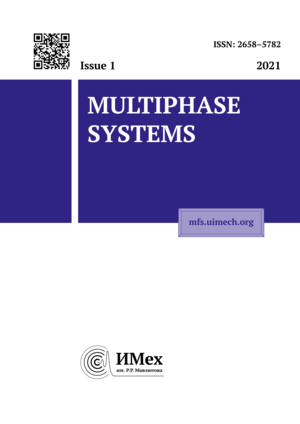

Abstract is formatted in the header of the source file as a parameter to the \abstract{} command.
The abstract is intended to give a detailed description of the article, which makes it possible to judge the content used research approaches and results obtained. The volume of the abstract is 200–250 words (in the final file they are 18 to 22 lines long).
Abstract can contain mathematical symbols (Greek letters, accents, degree symbol, etc.), but should not include equations. An exception is made for equalities determining important values, that is mathematical expressions of the form α = 123.
The abstract should not contain tables, images, references to literature and other cross-references.
This article provides a quick guide to using the mfs.cls class, which defines registration of an article in the journal ”Multiphase Systems“. The description is given in such a way that it can be used as a template for preparing your article.
The editors of the journal ”Multiphase Systems“ and the authors of this article ask you to carefully follow the presentation the description, paying particular attention to those paragraphs that are in bold.
preparation of an article,
design,
features,
up to 7 phrases
